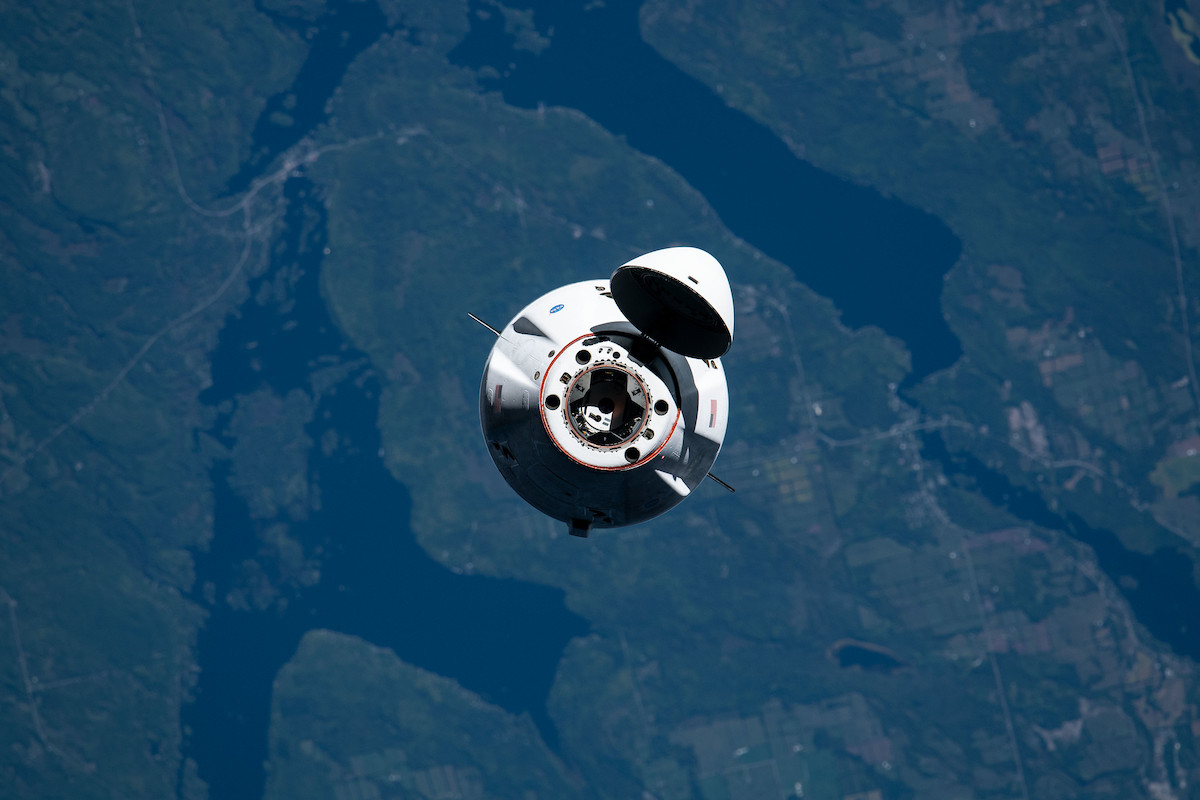EDITOR’S NOTE: Updated June 7 with no “no earlier than” launch date of June 28.

SpaceX has postponed this week’s planned launch of a Dragon cargo mission to the International Space Station to investigate a possible leak detected during fueling of the spacecraft at Cape Canaveral, pushing the flight until no earlier than late June.
The Dragon spacecraft was scheduled for launch Friday morning from NASA’s Kennedy Space Center in Florida. Officials have not set a new target launch date for the SpaceX resupply mission, but a NASA spokesperson confirmed it would not occur Friday or Saturday.
NASA mission control in Houston informed the space station crew early Tuesday that the new target launch date for the Dragon cargo mission is no earlier than June 28.
SpaceX detected “elevated vapor readings” of monomethyl hydrazine, or MMH, fuel in an “isolated region” of the Dragon spacecraft’s propulsion system during propellant loading ahead of this week’s launch, NASA said in a statement.
The fueling of the Dragon spacecraft is one of the final steps to prepare the capsule for flight, and typically occurs just before SpaceX moves the craft to the launch pad for integration with its Falcon 9 rocket.
The Dragon spacecraft has propellant tanks containing hydrazine fuel and nitrogen tetroxide oxidizer. The two propellants ignite upon contact with each other, providing an impulse for the cargo ship’s Draco thrusters used for in-orbit maneuvers.
Each Dragon spacecraft has 16 Draco thrusters, small rocket engines that generate about 90 pounds of thrust. The Draco engines are used for orbit adjustment burns and control the spacecraft’s approach to the space station, then fire at the end of the mission for a deorbit burn to guide the capsule back into the atmosphere for re-entry and splashdown.
SpaceX’s ground processing team, working at the Dragon refurbishment facility at Cape Canaveral Space Force Station, offloaded fuel and oxidizer from the area of the spacecraft with the elevated hydrazine vapor readings, NASA said.
Multiple sources told Spaceflight Now a hydrazine fuel leak could be the culprit, but NASA said the origin of the vapor hasn’t been identified yet.
“Once the exact source of the elevated readings is identified and cause is determined, the joint NASA and SpaceX teams will determine and announce a new target launch date,” NASA said in a statement Monday.
The Dragon spacecraft assigned to the upcoming cargo mission is designated C208 in SpaceX’s fleet of reusable capsules. The spacecraft has flown to the space station two times before, most recently on a resupply mission spanning 32 days last August and September.
The next Dragon resupply mission, known as CRS-25, will be SpaceX’s 25th cargo flight to the space station under contract with NASA.
The Dragon capsule on the CRS-25 mission will deliver more than 4,500 pounds of food, supplies, and experiments to the orbiting research laboratory.
The spacecraft will also ferry an Earth science instrument to the station for monitoring the mineral composition of dust particles in desert regions around the world. Developed at NASA’s Jet Propulsion Laboratory, the Earth Surface Mineral Dust Source Investigation, or EMIT, instrument is already latched inside the Dragon spacecraft’s unpressurized trunk for the ride to the space station.
The EMIT instrument will be removed from the Dragon trunk using the space station’s robotic arm, then mounted on an experiment platform outside the complex. Data collected by the instrument will help scientists learn more about how dust lifted int the atmosphere from deserts impact Earth’s ecosystems and human health.
While the Dragon cargo launch is on hold, SpaceX is pressing ahead with plans for another Falcon 9 launch this week with the Egyptian Nilesat 301 communications satellite. Nilesat 301 is scheduled to lift off Wednesday from Cape Canaveral during a launch window opening at 5:04 p.m. EDT (2104 GMT).
Email the author.
Follow Stephen Clark on Twitter: @StephenClark1.
